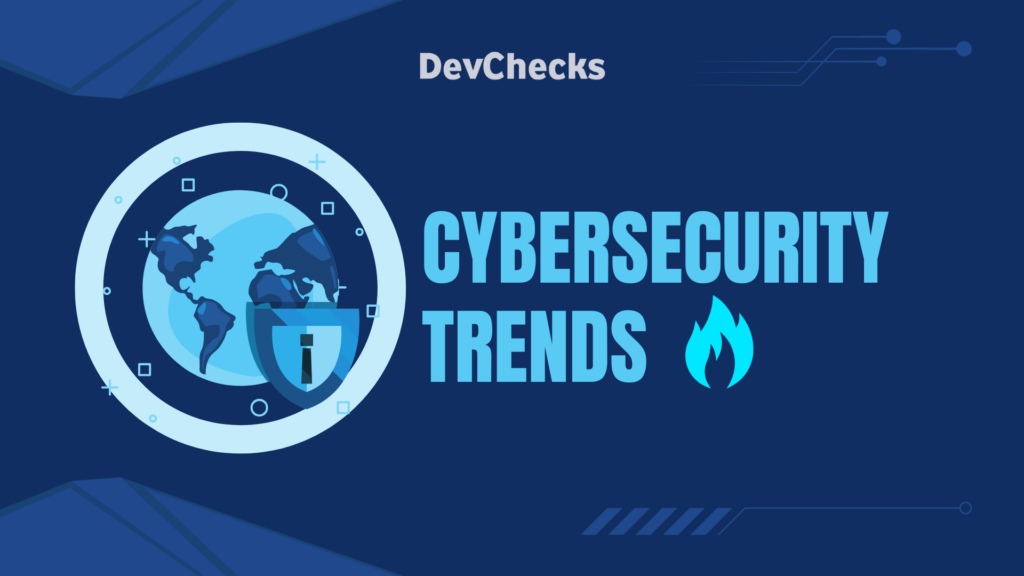- Introduction
- 1. AI-Powered Cybersecurity
- 2. IoT Security Challenges
- 3. Zero-Trust Architecture
- 4. Cloud Security Enhancements
- 5. Cybersecurity for Remote Work
- 6. Quantum Computing and Post-Quantum Cryptography
- 7. The Rise of Cybersecurity-as-a-Service (CaaS)
- 8. Cyber Insurance Becomes Mainstream
- 9. Data Privacy Regulations on the Rise
- 10. Cybersecurity Awareness and Employee Training
- Conclusion

Introduction #
The cybersecurity landscape is constantly evolving, driven by technological advancements and the increasing sophistication of cyber threats. As businesses and individuals embrace digital transformation, staying ahead of cybersecurity trends is critical to safeguarding sensitive data, maintaining trust, and ensuring compliance.
This article explores the top 10 cybersecurity trends of 2025, offering insights into the strategies and technologies shaping the future of digital security.
1. AI-Powered Cybersecurity #
Artificial intelligence (AI) is transforming the cybersecurity field. While AI-driven tools enhance threat detection by analyzing patterns and predicting attacks, cybercriminals are also leveraging AI to create more sophisticated attacks.
How It’s Used:
- Detecting and responding to anomalies in real-time.
- Automating repetitive tasks like vulnerability scanning.
Challenge: Businesses must adopt AI-based tools faster than hackers develop AI-driven attacks.
2. IoT Security Challenges #
The Internet of Things (IoT) continues to expand, with billions of connected devices entering homes, workplaces, and industries. However, each connected device introduces potential vulnerabilities, making IoT security a top priority.
Example: Smart home devices like cameras and thermostats can be exploited to access home networks.
Focus for 2025: Businesses must implement robust IoT security measures, such as encryption and network segmentation.
3. Zero-Trust Architecture #
The zero-trust security model has gained prominence as a fundamental approach to protecting networks. Unlike traditional security models, zero trust assumes that no user or device can be trusted by default, even if they are within the network.
Core Principles:
- Always verify user identities.
- Grant access on a need-to-know basis.
Why It’s Important: This model minimizes risks from insider threats and lateral movement in case of a breach.
4. Cloud Security Enhancements #
With the continued shift to cloud computing, securing cloud environments is a top concern for businesses. Data breaches and misconfigurations remain the leading causes of cloud-related cybersecurity issues.
Key Strategies for 2025:
- Implementing end-to-end encryption for cloud data.
- Using tools for continuous monitoring and compliance checks.
Stat: Over 90% of organizations now operate in hybrid or multi-cloud environments, increasing the complexity of security management.
5. Cybersecurity for Remote Work #
The rise of remote and hybrid work models has introduced new cybersecurity challenges. Home networks and personal devices often lack enterprise-grade security, making them attractive targets for hackers.
Best Practices:
- Providing secure VPNs for remote workers.
- Enforcing endpoint protection and regular security updates.
Trend: Companies are investing in tools that monitor and secure remote access points without compromising employee productivity.
6. Quantum Computing and Post-Quantum Cryptography #
Quantum computing has the potential to break traditional encryption methods, creating significant security risks. As this technology matures, businesses must prepare for its impact.
What’s Being Done:
- Development of post-quantum cryptography standards.
- Governments and tech companies are testing quantum-resistant algorithms.
Future Outlook: Early adopters of post-quantum security measures will have a significant advantage in mitigating risks.
7. The Rise of Cybersecurity-as-a-Service (CaaS) #
With the growing complexity of cybersecurity threats, businesses are turning to managed security providers for expertise. Cybersecurity-as-a-Service (CaaS) offers scalable, cost-effective solutions tailored to specific needs.
Benefits:
- 24/7 monitoring and incident response.
- Access to advanced tools without the need for in-house expertise.
Trend: Small-to-medium businesses (SMBs) are the largest adopters of CaaS solutions due to budget constraints and resource limitations.
8. Cyber Insurance Becomes Mainstream #
As cyberattacks become more frequent, organizations are investing in cyber insurance to mitigate financial risks. Policies now cover costs related to ransomware payments, legal fees, and data recovery.
Focus Areas for 2025:
- Evaluating coverage for emerging threats like AI-driven attacks.
- Ensuring compliance with insurer-mandated cybersecurity standards.
Stat: The global cyber insurance market is projected to reach $35 billion by 2030, up from $9 billion in 2020.
9. Data Privacy Regulations on the Rise #
Governments worldwide are introducing stricter data privacy regulations to protect consumers and businesses from cybercrime. Compliance is no longer optional—it’s a critical component of a business’s cybersecurity strategy.
Recent Updates:
- Expansion of GDPR-like regulations in non-European countries.
- Stricter enforcement of existing laws with higher penalties for breaches.
Action Plan for Businesses: Regular audits, data encryption, and transparent data-handling policies are essential for compliance.
10. Cybersecurity Awareness and Employee Training #
Despite advancements in technology, human error remains a leading cause of cyber incidents. In 2025, organizations are prioritizing cybersecurity awareness programs to empower employees as the first line of defense.
Components of Effective Training:
- Recognizing phishing attempts.
- Creating strong passwords and avoiding reusing them.
- Reporting suspicious activity promptly.
Example: Companies that conduct regular phishing simulations see a 70% reduction in successful phishing attacks.
Conclusion #
The cybersecurity landscape in 2025 is both exciting and challenging. From AI-driven solutions to quantum-resistant encryption, businesses must stay informed and proactive to address emerging threats. Implementing these trends isn’t just about protecting assets it’s about ensuring long-term business success in a digital-first world.
Ready to future-proof your organization against cyber threats? Contact us today for customized solutions tailored to your needs.



